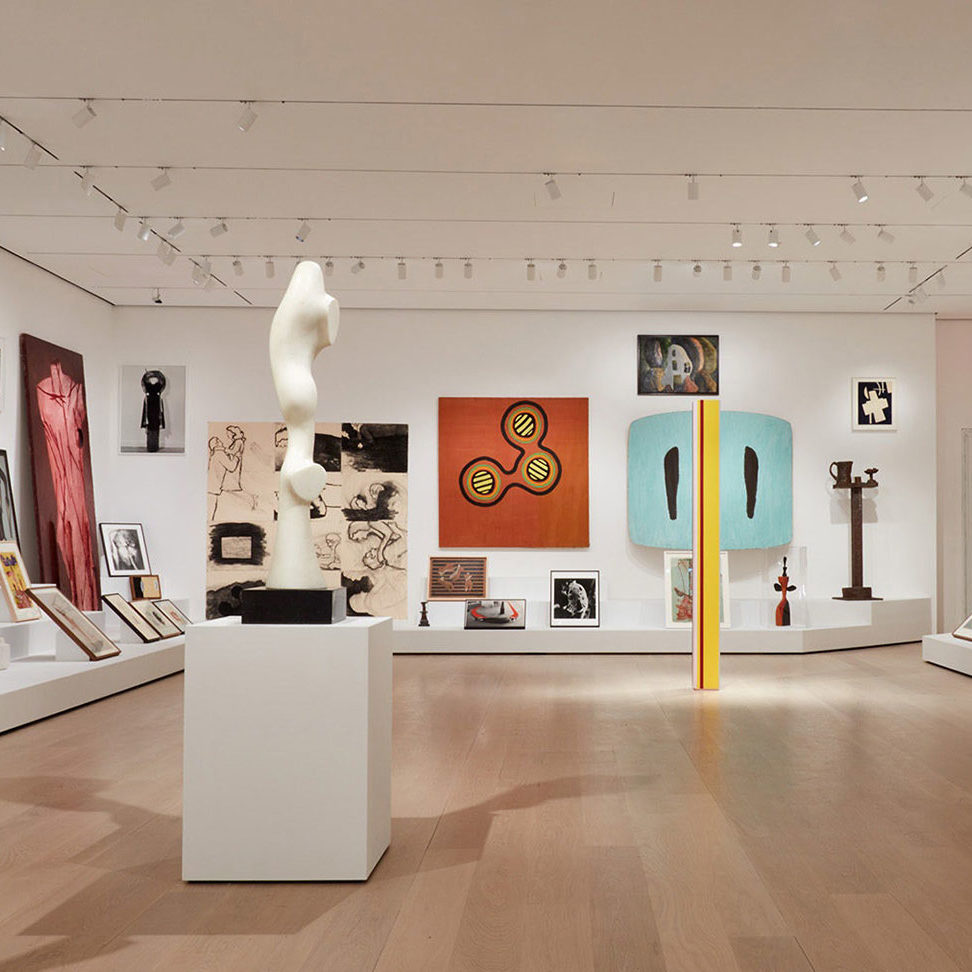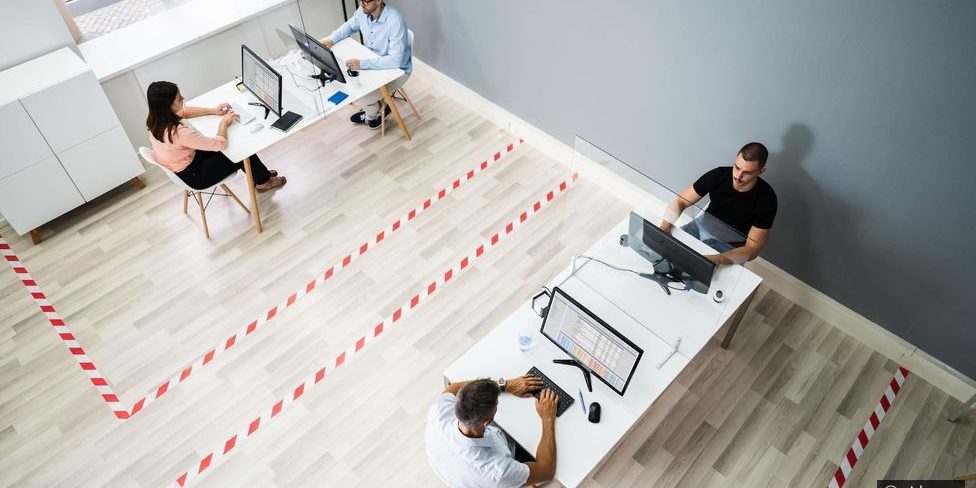What’s the best way to stay on top of the experience economy? Experience it all in one place. Liquid Dispatch X, your go-to consolidated source for brand experience, employee experience and customer experience. Take a look at the trends, the wins, and the ins and outs of what it takes to keep your most valuable and visible asset—your brand—running strong.
SEPTEMBER Article Roundup
As Physical and Digital Lines Blur, Brand Relationships Are Redefined
The COVID-19 pandemic has been constantly transforming how brands connect with customers and employees. These shifts are guiding experiences to develop new design interactions and brand relationships. Many brands are taking dramatic steps to integrate physical and digital spaces to better address customers’ and employees’ new needs. We take a closer look into the new principles that are guiding brand experience via meaning, value and connection. And we also explore how the hybridization of physical and digital features is redefining brand-customer and brand-employee relationships.
TOP PICKS
BRAND EXPERIENCE
key takeaways
Brand Strategy Needs to Embrace Fluidity
For many of us, the new normal is predictably unpredictable. Safety measures contract and expand as the COVID-19 cases decline and spike. And as consumers experience continued uncertainty, brands need to become more fluid. Adapting to an ever-shifting world starts with a brand strategy that helps the brand find new ways to connect with consumers. Supporting customers in turbulent times means brands have to apply fluid thinking to physical, virtual and physical-virtual hybrid spaces, making sure perception and purpose align throughout the brand experience. As well, brands need to connect with their customers by understanding what matters the most to consumers—value, availability, convenience, safety, delight, usefulness and meaning.
The New Pixels and Mortar Brand Experience
While digital is playing a significant role in reshaping business and brands, physical spaces are still very relevant. We’re seeing the brick and mortar model being reimagined. The new normal has been a source of continuous change and with it, customer touchpoints have been shifting from offline-to-online to an online-plus-offline (O+O) model. To make strides in an evolving landscape, brand experiences need to consider the O+O integration as a means of building synergy and value with customers.
CUSTOMER EXPERIENCE
key takeaways
Customer Experience Strategy Blends Touchpoints to Foster Relationships
The COVID-19 pandemic has shifted consumer behavior in dramatic ways. Industries like retail, travel and hospitality have been notably impacted. But brands are finding ways to create new customer experiences that take safety and efficacy into consideration. We’re already seeing some brands redesign across all touchpoints. Physical elements are being repurposed into digital spaces as well as digital features being integrated into physical settings. Reshaping customer experiences helps create an ideal blend of physical and digital elements, providing value to customers and ultimately cultivating stronger brand-consumer relationships.
Connection, Meaning and Value Drive Customer Experience Strategy
Consumers expect more from brands nowadays. A good customer experience can be defined by the connection between the consumer and brand. Customers develop deeper relationships with brands that use acts of appreciation. This trend is driving some brands to invest more into responsive customer service. Given the health crisis and racial justice movement, brands have been actively building on more meaning with customers. Giving back to communities in need and making new products that provide help during crises (masks, hand sanitizer, ventilators) are ways brands have already brought more meaning to customer experiences. Value also stands out as an important attribute. With uncertainty consuming daily life, consumers are looking to brands that offer usefulness. A customer experience that makes life a little easier can help brands resonate more deeply and authentically with weary consumers.
Tapping Customer Emotions to Reinforce Relationships
In times of widespread change and uncertainty, customer experience plays a key role in building meaningful and trusted relationships with consumers. Qualities like empathy, care and responsiveness are often built in real-time interactions. Many of these attributes are wrapped into perceived brand values, which can be pivotal in consumers’ purchasing decisions. And with health and social crises reshaping norms, customers are all the more inclined to seek out brands that align with their own beliefs and values.
EMPLOYEE EXPERIENCE
key takeaways
Workspaces Take the Shape of Hybrid
As many of us have already experienced, the common practice of social distancing has rapidly redefined how we work. Many employees have already settled into the new normal of working remotely. As the COVID-19 pandemic persists, organizations have been planning for a longer-term solution. Much of this thinking has been dedicated to redesigning employee experience touchpoints into hybrid workspaces, blending remote work with office work.
Working remotely has proven useful for a majority of employees, giving them freedom to work when and where they prefer. However, remote work isn’t without its disadvantages: household distractions, spotty Wi-Fi connections, IT issues and socioeconomic and racial disparities. Moving forward, brands need to be thoughtful in redesigning employee experiences—both physically and digitally—while enabling employees to work successfully and collaboratively.
Culture Tenets Give Structure
Now more than ever, brands must give deeper consideration to their employees’ experiences. Organizations need to ensure the tenets that made their culture successful —be it purpose, values, etc—remain when redesigning workspaces to adapt to the new normal. And much of this change has to also take into account what employees are needing even more now in addition to meaning —safety, security, connection and community. To be effective, organizations have to actively listen to and involve employees in redesigning workplace experiences—virtually and physically.
Building Culture Into Workspaces
As remote work has become more commonplace, brands are at risk of jeopardizing their culture. Relationship-building and an overarching sense of belonging quickly diminish when employees adopt a remote work routine. Disconnected employees can lead to an increase in turnover and a drop in work performance. To mitigate culture issues, leaders need to measure the effectiveness of key employee experiences to see whether they are driving engagement and connection. These metrics can then help inform redesigning a physical and virtual work strategy, helping the brand cultivate a stronger culture with employees.
SEPTEMBER ARTICLES
BRAND EXPERIENCE

More Than a Pivot: Why Brands Need to Embrace Fluidity — Muse by Clio, Daniel Edmundson @MusebyClio @americangrain
“[Dyson’s] culture is all about self-invention, innovation and egalitarianism. It served them well when they worked around the clock to develop an entirely new medical ventilator in 30 days. By identifying a need and recognizing that their skills could provide a solution, the brand successfully intubated a business they weren't even a part of through fluid thinking. One quality all these brands share, as well as the countless others that have risen to the occasion, is the depth of understanding around people and culture. Coupled with a fluid mindset, this level of understanding enables brands to act quickly to meet human needs and survive unexpected situations.”

Brick & Mortar Won’t Lose its Importance; It’ll Need to be “Reimagined” to Meet New Demands, Desires and Expectations: Beth Ann Kaminkow, Global CEO, Geometry — Business Insider, Samarpita Banerjee @biIndia @Samarpitab
“In short, we’ll need to use digital to enhance the consumer experience both online and offline. Omni now also refers to the need within an organization to have a full view of a product's route to market from creation to conversion. This recognizes that if a brand can’t be found or is out of stock, that is not just a sales issue, it creates a longer term brand equity issue. This elevates the importance of commerce in the marketing and media mix, explained Kaminkow.”
CUSTOMER EXPERIENCE

This Week in Event Venues: Virtual Concerts, Hotel Home Schools, and More — BizBash, Claire Hoffman @BizBash @ClaireHoffman
“The 199-room Hotel Maya in Long Beach, Calif., is offering a "Back to Home School Blues" virtual classroom package, with special rates available daily from 9 a.m. to 6 p.m. Rooms have been converted into "hotel school" with free Wi-Fi, an ergonomic chair, boxed lunches for two, and even a "recess break" with cookies and milk. The InterContinental Hotel San Francisco is offering a similar package dubbed "Hotel Homeroom," where parents will also be given a complimentary office space.”

11 Examples of good customer service practices — Qualtrics, Diana Kaemingk @Qualtrics
“Ritz-Carlton employees are allowed up to $2,000 to fix any guest problem, no questions asked. One example was told by customer John DiJulius, who left his charger behind at The Ritz-Carlton Sarasota. He received a next-day air package with his charger and a note saying ‘Mr. DiJulius, I wanted to make sure we got this to you right away. I am sure you need it, and, just in case, I sent you an extra charger for your laptop.’ A customer’s error can be a great opportunity. Use it as a chance to go above and beyond. By anticipating that John would need his charger for his laptop, employees were able to be proactive and delight him with their thoughtfulness and concern.”

Three Consumer Changes Will Define The Future Of How We Buy — Forrester, Anjali Lai @Forrester @anjalilai
“The future of consumer buying is not a shift from traditional to digital, nor is it an abandonment of self-service in favor of delivery; it’s all of the above. Consumers want values-based experiences, experimentation, price, and convenience, and they don’t want to make the trade-off. The most successful forthcoming innovations will yield new products, services, and delivery models that cater to all consumer motivations at once.”
EMPLOYEE EXPERIENCE

Why the Future of Work Might be ‘Hybrid’ — BBC, Christine Ro @BBC
“Even before Covid-19, she believed that organisations needed to rethink practices that were conventional but not efficient, like taking a flight for a two-hour meeting. ‘It just takes a little creativity and comfort, getting used to a new way of doing things. And so for me the silver lining in the pandemic is that it has forced organisations to find ways to do that. And I really hope they never go back, because for people’s wellbeing, work-life balance, etc., it just really is better to have this kind of flexibility.’”

Remote Work: Is It a Virtual Threat to Your Culture? — Gallup, Jake Herway @GallupWorkplace
“Organizations need to know more than how to describe their culture. They need to know the drivers of the culture -- the values, beliefs, traditions, structures, unwritten rules, behaviors and the repeated moments that make up the employee experience and create the culture. These culture drivers either help or hinder employees' ability to perform.”

We Need to Rethink Employee Experience — SmartBrief, Denise Lee Yohn @SmartBrief @deniseleeyohn
“Now more than ever, we need to be listening to our employees and learning their needs and expectations. And we need to ensure we are hearing from different groups within our workforce so we understand the differences between them. For example, parents with school-aged children face unique challenges, and Black employees may want to be engaged differently...Plus, we should involve them in the development and testing of EX strategies, tactics and programs. They can provide valuable insights about what’s working, what not and why.”

How companies are preparing employees for long-term work-from-home — CNBC, Jennifer Liu @CNBCMakeIt @jljenniferliu
“To sustain employees’ decisions to continue remote work, Feather has since broadened their weekly food credit to a flat $100 monthly stipend that can be used on food as well as office supplies, up to 25% of a Wi-Fi bill or additional computer hardware, such as a keyboard, mouse or headphones. Ragland says he intends to use the credit toward his internet bill: “It’s a huge help to have a monthly expense reduced, especially since other bills at home have gone up because we are home so much more.”

The Workforce Is About to Change Dramatically — The Atlantic, Derek Thompson @TheAtlantic
“What’s more, for many workers, their emotional relationships with colleagues have changed because their spatial relationships with those colleagues have changed. Many white-collar companies have become virtual group chats punctuated by Zooms. This is not business as usual. Online communications can be a minefield for mutual understanding, as Bill Duane, a former Google engineer and a corporate consultant, told me.”




